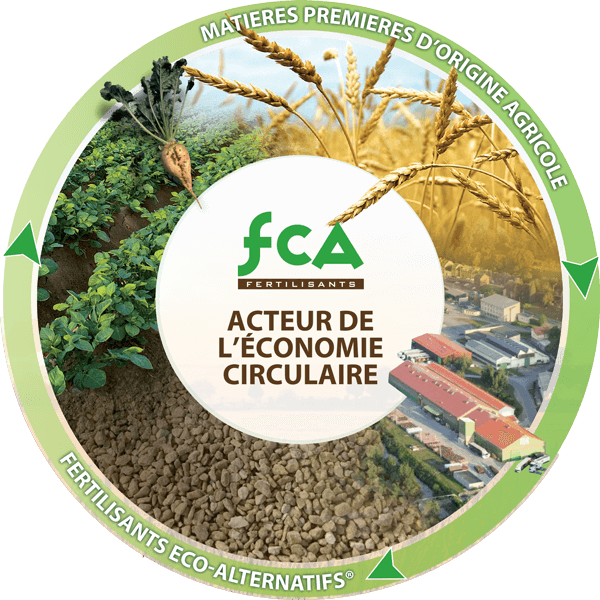THE ECONOMY OF SUSTAINABLE AGRICULTURAL DEVELOPMENT
Long confined to companies working in waste and recycling management, the circular economy now concerns the agricultural sector. The international agricultural show which was held in France in 2019 brought this theme to the fore, and for good reason: agricultural practices are responsible for a large share of greenhouse gas emissions and consume large quantities of water. Paying particular attention to the use of resources, as well as the agricultural practices used, improves:
- The impact of production on the environment
- Proximity to consumers
FCA Fertilisants
ACTOR OF THE CIRCULAR ECONOMY.
FCA Fertilisants offers innovative fertilization solutions for sustainable agriculture and respect for the main principles of the circular economy. The composition of fertilizers and fertilization supplements includes raw materials of plant origin, as well as premixes with Calkorium® and Calkonutrium® patented by the brand. The advantages of these components are manifold.

The raw materials composing the fertilization solutions of FCA Fertilisants are of agro-industrial, natural and vegetable origin. This makes it possible to nourish the plants and energize the soils thanks to biological elements from the earth. The fertilization residues therefore integrate naturally into the soil from which they originate, without polluting.
In partnership with agro-industrialists, FCA Fertilisants ferment beet molasses to make yeasts, amino acids and especially gelatin. When these elements are extracted, formulas based on nitrogen, potash, phosphorus and sulfur are created.
Calkorium and Calkonutrium premixes have the advantage of energizing the biological life of soils by stimulating microorganisms naturally present in the soil. This biological life makes the soil fertile, which makes it possible to “trap” greenhouse gases. INRA estimates that soils constitute the largest biological carbon storage space on earth, with the exception of the oceans and certain rocks.
By encouraging soil fertility, plants capture more CO2 from the air through photosynthesis. This then allows them to decompose more carbon into organic matter, and ultimately, into humus.
